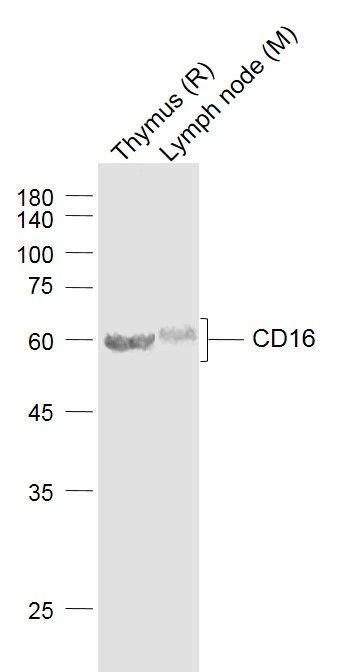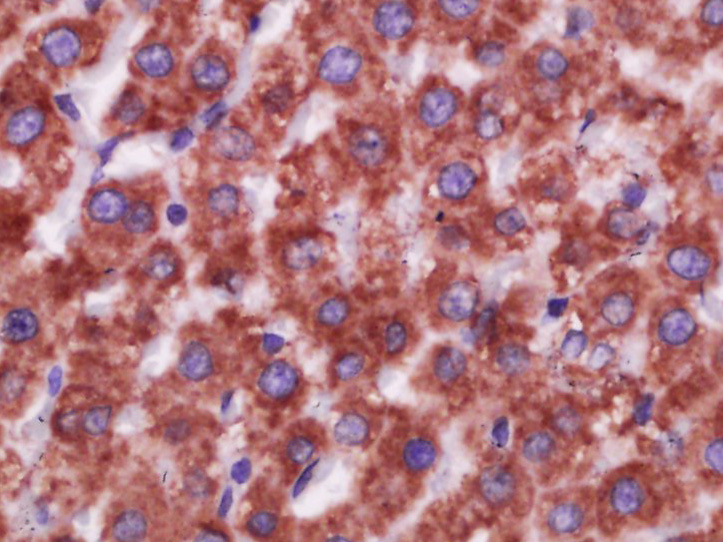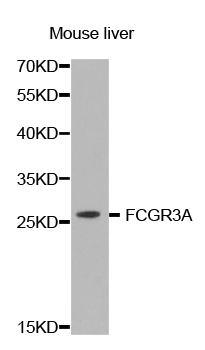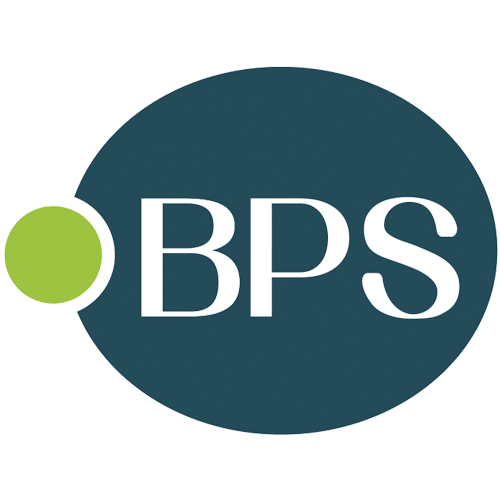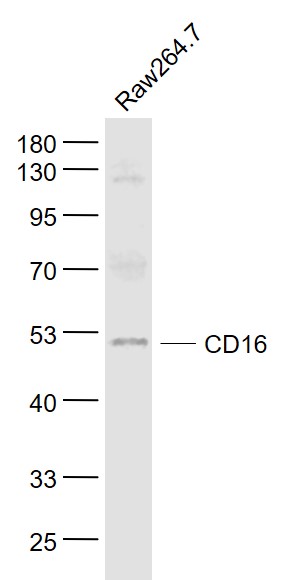
Lane 1: Raw264.7 cell lysates probed with CD16 Polyclonal Antibody, Unconjugated (bs-6028R) at 1:1000 dilution and 4˚C overnight incubation. Followed by conjugated secondary antibody incubation at 1:20000 for 60 min at 37˚C.
CD16 Polyclonal Antibody
BS-6028R
ApplicationsFlow Cytometry, ImmunoFluorescence, Western Blot, ELISA, ImmunoCytoChemistry, ImmunoHistoChemistry, ImmunoHistoChemistry Frozen, ImmunoHistoChemistry Paraffin
Product group Antibodies
TargetFCGR3A
Overview
- SupplierBioss
- Product NameCD16 Polyclonal Antibody
- Delivery Days Customer16
- ApplicationsFlow Cytometry, ImmunoFluorescence, Western Blot, ELISA, ImmunoCytoChemistry, ImmunoHistoChemistry, ImmunoHistoChemistry Frozen, ImmunoHistoChemistry Paraffin
- Applications SupplierWB(1:300-5000), ELISA(1:500-1000), FCM(1:20-100), IHC-P(1:200-400), IHC-F(1:100-500), IF(IHC-P)(1:50-200), IF(IHC-F)(1:50-200), IF(ICC)(1:50-200)
- CertificationResearch Use Only
- ClonalityPolyclonal
- Concentration1 ug/ul
- ConjugateUnconjugated
- Gene ID2214
- Target nameFCGR3A
- Target descriptionFc gamma receptor IIIa
- Target synonymsCD16, CD16-II, CD16A, FCG3, FCGR3, FCGRIII, FCR-10, FCRIII, FCRIIIA, FcGRIIIA, IGFR3, IMD20, low affinity immunoglobulin gamma Fc region receptor III-A, CD16a antigen, Fc fragment of IgG receptor IIIa, Fc fragment of IgG, low affinity III, receptor for (CD16), Fc fragment of IgG, low affinity IIIa, receptor (CD16a), Fc gamma receptor III-A, Fc-gamma RIII-alpha, Fc-gamma receptor III-2 (CD 16), Fc-gamma receptor IIIb (CD16), FcgammaRIIIA, IgG Fc receptor III-A, igG Fc receptor III-2, immunoglobulin G Fc receptor III, low affinity immunoglobulin gamma Fc region receptor III-A/III-B recombinant, low affinity immunoglobulin gamma Fc region receptor III-B, low affinity immunoglobulin gamma receptor III-a Fc fragment, neutrophil-specific antigen NA
- HostRabbit
- IsotypeIgG
- Protein IDP08637
- Protein NameLow affinity immunoglobulin gamma Fc region receptor III-A
- Storage Instruction-20°C
- UNSPSC12352203
References
- An G, Wu F, Huang S, et al. Effects of CCL5 on the biological behavior of breast cancer and the mechanisms of its interaction with tumor‑associated macrophages. Oncol Rep. 2019,42(6):2499-2511. doi: 10.3892/or.2019.7344Read this paper

